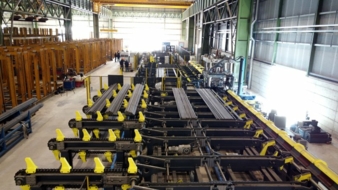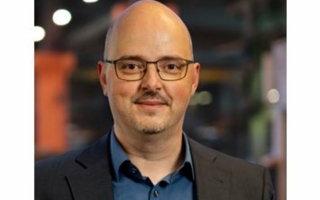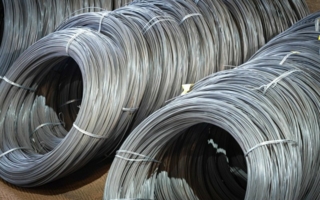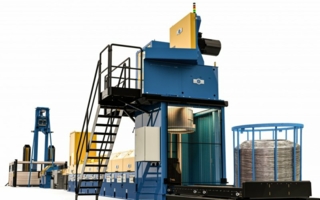20/05/2022 – Lines for ferrous and non-ferrous metals
Coil and bar drawing and peeling
SAS Engineering+ Planning for almost fifty years now operates in the processing sector of ferrous and non-ferrous metals supplying technological solutions and a constant support to companies SAS is specialised in the manufacturing of equipment for cold finishing.
In particular the company produce coil and bar drawing and peeling lines for ferrous and non-ferrous metals, with diameters from 3mm to 100mm handling products through all their phases design, engineering, manufacturing, assembly e final test.
The drawn bar market represents a backbone of the mechanical production chain worldwide. In the lasts ten years saw a significant compression of the sector production squeezed between greater demand for quality and one greater demand for product economy. It was created like this a growing need for responsive production systems and technologies quickly to this precise request of the sector.
As in many other technological fields of production SAS has found themselves suddenly faced with the complexity of reconciling one medium-slow development dynamics of technologies and organizations productive with a rapid evolution of the request of quality and certification of the finished product.
Automation processes and relative architectures
Industrial production systems have a distributed architectural control structure that is now consolidated and structured on 5 levels:
Level 0: “the field”, i.e. the mechanical and power part of the system, where the production process is actually created.
Level 1: “direct control”, i.e. the direct automation part that supervises the management of the automations necessary for carrying out the production process.
Level 2: “supervision”, i.e. the configuration management part of the control systems and production schemes.
Level 3: “advanced control and saving historical data”, i.e. medium-long period memorization of the data from level 2 in order to generate mainly off-line optimization strategies of the configurations.
Level 4: “management level”, i.e. the centralization and statistical summary of saved historical data in order to permit MES (Manufacturing Execution System) and ERP (Enterprise Resource Planning) activities.
Specifically, the implementation of MES systems, even if in the form of a basic service, was the backbone of the first season of development and dissemination and called “industry 4.0”.
Their work starts from the consideration that the control system of a machine or a system is composed by a network of distributed processing devices which basically include three fundamental interfaces: 1) interfacing towards the physical product realization process 2) interfacing towards the operator for line management 3) interfacing towards the managerial structure.
Thus the production system control loops are identified on three levels: the first “direct” in the management of the system mechanisms (level 0 managed by level 1) the second for the “operator” which entails the regulations necessary in order to keep the product within the specifications requested by the customer and market (HMI access through level 2) and the third for “management” which handles monitoring and correcting the system use strategies based on the production efficiency goals for the expected profit.
The drawn product manufacturing process
The production architecture SAS is referring to is composed of a processing process from roll to bar where the salient product elements basically refer to the geometric characteristics of the part such as the straightness, geometric regularity, finish and the quality of the bar facing processing.
This type of processing is normally divided into: pre-straightening, drawing, straightening, cutting, finishing of the ends and packaging.
One of the weak aspects of current systems is composed of the process control loop referred to the realized quality; this is a loop that passes through operator supervision methods based on the information produced by the quality control systems; basically the product quality and its constancy are mainly managed by the operator’s expertise and synthesis of the production settings based on previous experiences related to factors that cause the obtained characteristics to deviate in relation to the factors around the production process.
Artificial intelligence, Machine Learning and Fuzzy Cluster Analysis
Their work entailed the application of artificial intelligence, machine learning and fuzzy cluster analysis technologies to build an automatic system in the process control loop referred to the quality result.
The system analysis procedures organized in a two phase process: the first based on a statistical analysis at the end of the monitoring cycle and the second based on clustering of the cycle just analyzed with those accumulated during production process management.
The first level consists in the mathematical analysis of the cycle just completed in the observation window through the construction of a structured statistical synthesis. The monitoring window parameters are essentially tied to the change in the main characteristics of the processed product or at the end of the production batch.
The selection of these analytical window conditions is primarily connected to machine technical parameters such as the operating temperatures of processing tools since based on our experience we have found for example that when a machine is left off even for just a few minutes variations of the operating conditions can be created comparable at times to variation of the processed material characteristics.
When the end of monitoring cycle conditions are reached, the statistical analysis phase of the cycle itself starts. This process includes the previous definition of a set of standardization parameters which can describe the type of phenomenon implied in the control cycle with sufficient precision i.e. the set of parameters must be adequate for correctly defining the cycle type based on the aims set for the control.
This mathematical approach provides a valid method for building a system that automatically learns from the occurrence of recurring situations correlated to the desired result in order to accumulate a type of clustered historic data to act as a setting parameter of the process itself. Basically it becomes a control system with the ability to recognize situations that have already occurred in order to implement the best operating strategies.
In conclusion, this represents a learning method that makes the control system expert through an automatic learning mechanism. Feel free to contact SAS for any quality or productivity improvement of cold finishing process.
wire 2022, hall 9 booth E 60-F 60
SAS Engineering And Planning Srl
Via Pescone 20, 23867 Suello (LC), Italy
Tel.: +39 031 655593
info@sas.it
www.sas.it





